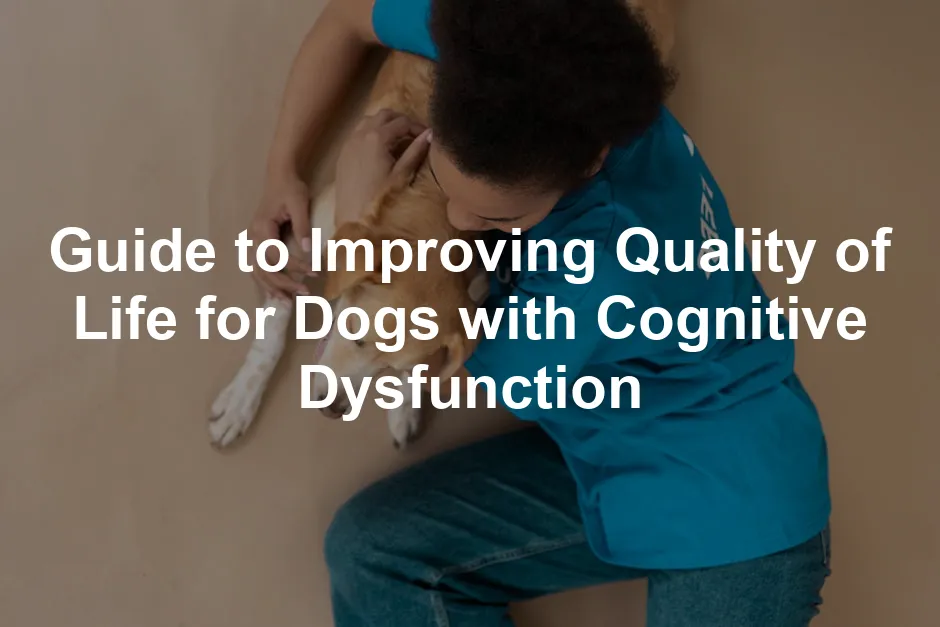Introduction
In the twilight years of our beloved canine companions, many pet owners find themselves navigating a challenging terrain known as canine cognitive dysfunction (CCD) or “dog dementia.” Much like humans, dogs can experience a decline in cognitive abilities as they age, leading to confusion, anxiety, and altered behaviors. Imagine your loyal pup suddenly forgetting their favorite toy or struggling to find their way around the house they’ve known for years. It’s a heart-wrenching reality that many dog owners face, but fear not! This guide aims to arm you with the knowledge and strategies needed to enhance your dog’s quality of life, ensuring their golden years are filled with love, comfort, and joy.
Canine cognitive dysfunction is not just a quirky phase; it’s a genuine medical condition. It’s like your dog is living in a perpetual “senior moment.” The symptoms can range from simple forgetfulness to complete disorientation. You might notice your furry friend staring blankly at the wall or wandering into corners as if they’re lost in a maze. These behaviors are signals that a part of their brain isn’t functioning as it used to.
Recognizing these changes early can make a world of difference. The sooner you act, the better the chances of slowing down the progression of CCD. Your four-legged friend deserves a chance to enjoy their twilight years, and you have the power to make that happen. So grab a cup of coffee, settle in, and let’s get into the nitty-gritty of improving the quality of life for dogs with cognitive dysfunction.
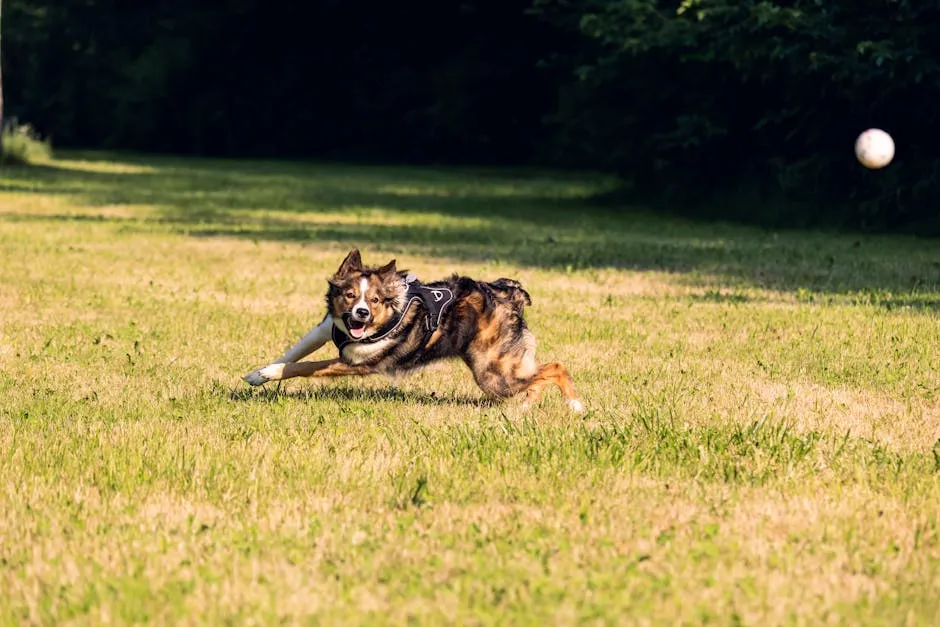
Improving your dog’s quality of life is essential, especially when dealing with cognitive dysfunction. Learn more about how to enhance your dog’s quality of life.
Summary of Key Points
This comprehensive guide will cover the following key aspects of managing canine cognitive dysfunction:
- Understanding Canine Cognitive Dysfunction: We’ll explain what CCD is, its prevalence in older dogs, and how it compares to human dementia.
- Recognizing Symptoms: By familiarizing yourself with the DISHA(A) acronym (Disorientation, Interactions altered, Sleep-wake changes, House soiling, Activity level changes, and Anxiety), you’ll learn how to identify the early signs of CCD.
- Diagnosis and Vet Consultation: Learn the importance of consulting your veterinarian for a proper diagnosis to rule out other underlying conditions and to discuss treatment options.
- Management and Treatment Options: Explore various management strategies, including medications like Selegiline, dietary changes, supplements, and environmental enrichment techniques to stimulate your dog’s mind.
- Home Care Tips: Practical advice on creating a supportive home environment, establishing routines, and providing mental stimulation through games and interactive toys.
- The Emotional Journey: Understand the emotional impact of CCD on both you and your dog, including the difficult decisions that may arise, like euthanasia.
By the end of this guide, you’ll be equipped with actionable insights to help your dog cope with cognitive decline, allowing both of you to cherish the time spent together. After all, our pets deserve nothing less than a comfortable, happy life, even as they navigate the challenges of aging.

Understanding Canine Cognitive Dysfunction
What is Canine Cognitive Dysfunction?
Canine Cognitive Dysfunction (CCD) is a neurobehavioral syndrome that predominantly affects older dogs. Much like Alzheimer’s disease in humans, it leads to a decline in cognitive functions. Symptoms can range from mild forgetfulness to severe disorientation. Studies reveal that 14% to 68% of dogs over the age of eight exhibit signs of cognitive impairment. Early recognition is crucial, as many owners mistake symptoms for typical aging behavior. Understanding CCD is vital for improving the quality of life for affected dogs.
Understanding canine cognitive dysfunction is essential for pet owners. Learn about home care tips for your dog.
The similarities between CCD and Alzheimer’s disease are striking. Both conditions involve the accumulation of beta-amyloid plaques in the brain. These plaques hinder communication between neurons, disrupting normal brain function. It’s a tough pill to swallow, but just as we see in people, our furry friends can also experience a decline in their cognitive abilities. The more we know, the better we can care for our beloved pets.
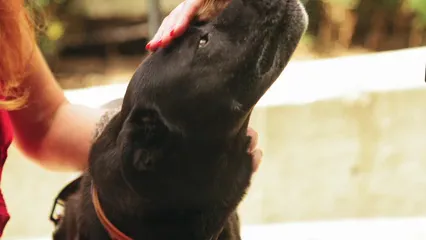
Pathophysiology
The pathophysiological changes in the brains of dogs with CCD resemble those in humans with Alzheimer’s. Key features include the presence of amyloid plaques and neurofibrillary tangles. These changes lead to significant neuronal loss and atrophy of brain structures responsible for learning and memory. Additionally, neurotransmitter imbalances, particularly a decrease in dopamine, contribute to the symptoms of CCD. This decline can drastically affect your pup’s behavior, leading to confusion, anxiety, and other troubling signs.
Research has shown that dogs with CCD exhibit changes in brain structure, including blood vessel fibrosis and cerebral atrophy. These alterations can significantly impact a dog’s behavior and overall quality of life. As the cognitive functions deteriorate, dogs may display a range of symptoms, including disorientation and changes in social interactions.
Risk Factors
Several factors contribute to the risk of developing CCD. Age is the primary factor; dogs over the age of seven are at a higher risk. Genetics also play a role, as certain breeds may be more predisposed to cognitive decline. Nutrition is another critical aspect. Dogs fed low-quality diets may have a higher likelihood of developing cognitive dysfunction. Concurrent health issues, like diabetes or hypothyroidism, can further exacerbate cognitive decline. Understanding these risk factors can help pet owners take proactive steps to support their dogs’ cognitive health.
While age is the most significant risk factor, other influences like chronic stress and exposure to toxins can also contribute. Providing a supportive environment can help mitigate these risks. Regular veterinary check-ups are essential for early detection and intervention, ensuring that aging dogs receive the care they need.

Recognizing Symptoms of CCD
The DISHA(A) Acronym
Recognizing the signs of CCD can be challenging, but the DISHA(A) acronym simplifies it. DISHA stands for Disorientation, Interactions altered, Sleep-wake changes, House soiling, Activity level changes, and Anxiety. Each category reflects specific behavioral changes that may indicate cognitive dysfunction in your dog.
- Disorientation: Your dog may seem lost in familiar surroundings, getting stuck in corners or staring blankly at walls.
- Interactions Altered: You might notice your dog withdrawing from family interactions or becoming less responsive to commands.
- Sleep-Wake Changes: Increased nighttime activity and excessive daytime sleeping can disrupt your dog’s routine.
- House Soiling: Accidents may occur even after your dog has been housetrained for years.
- Activity Level Changes: A decline in interest in play or walks may signal cognitive decline.
- Anxiety: Increased fearfulness or agitation, especially in new situations, can also be a symptom of CCD.
Being aware of these symptoms is crucial for timely intervention. Early detection can significantly improve the management of CCD and enhance your dog’s quality of life.
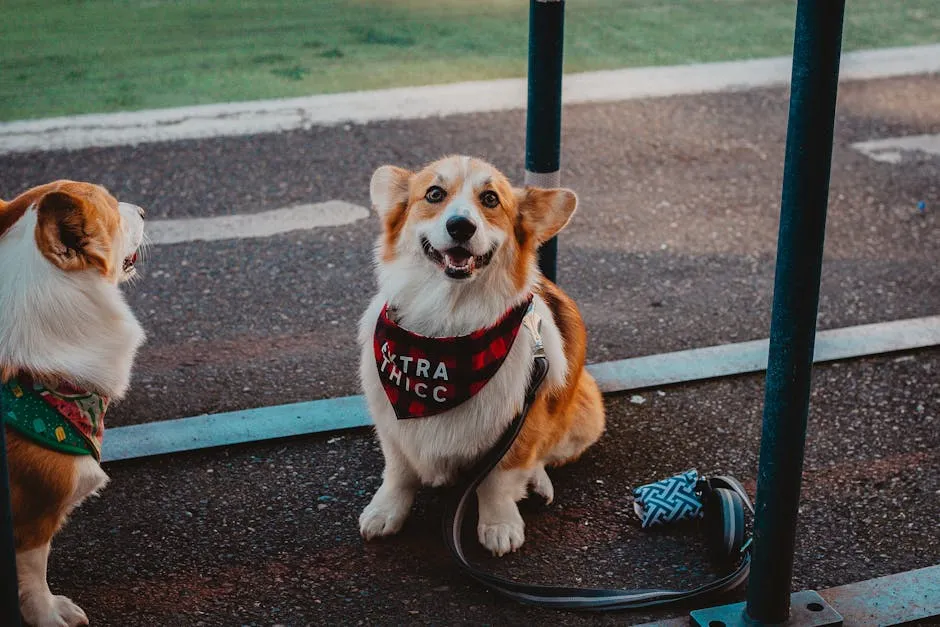
Diagnosis of CCD
Importance of Veterinary Consultation
If you suspect your dog may have CCD, consulting a veterinarian is vital. The diagnosis process often involves a thorough history and physical examination. Your vet may use behavioral assessments to gauge cognitive function and rule out other medical conditions that mimic CCD symptoms. Blood tests and imaging may also be employed to exclude underlying health issues.
Diagnostic tools like the Canine Cognitive Dysfunction Rating (CCDR) scale can help evaluate the severity of your dog’s cognitive decline. This assessment takes into account the DISHA(A) symptoms, allowing for a tailored approach to treatment. It’s essential to differentiate CCD from other conditions that can cause similar symptoms, such as renal disease or hypothyroidism.

Identifying CCD early can lead to effective management strategies, improving your dog’s quality of life. Regular vet visits and open communication about your dog’s behavior are key to navigating this challenging journey. With the right support, your canine companion can continue to live a fulfilling life despite cognitive challenges.
Management and Treatment Options
Medications
When it comes to medications for canine cognitive dysfunction (CCD), Selegiline (brand name Anipryl) is the star of the show. This FDA-approved drug works wonders by increasing dopamine levels, helping to improve your dog’s mood and cognitive function. Studies show that about 70% of dogs experience noticeable improvements within a month of starting treatment. It’s like giving your pooch a brain boost!
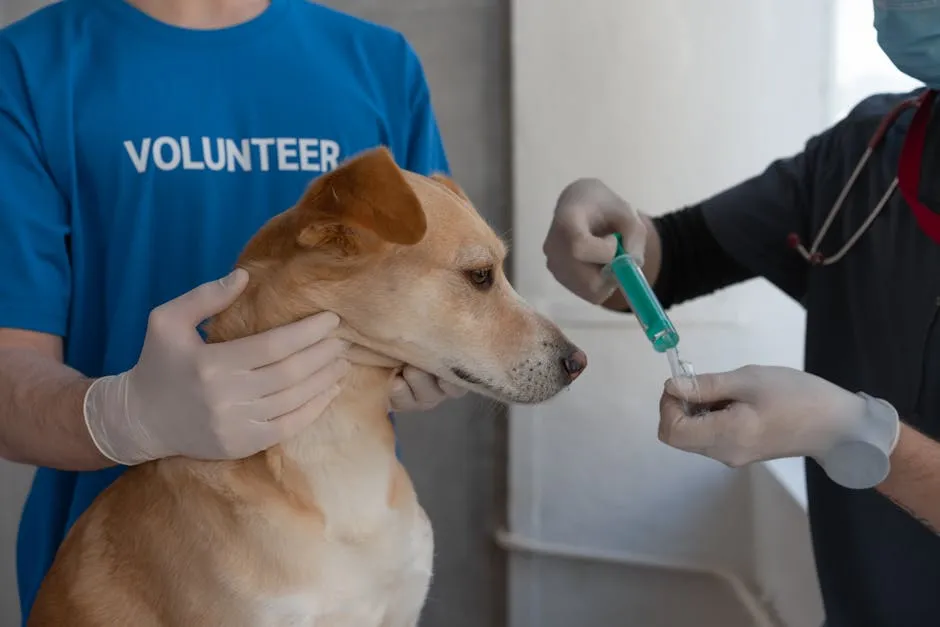
However, as with any medication, side effects can occur. Common ones include gastrointestinal upset, restlessness, and changes in behavior. To keep your furry friend safe, closely monitor their reaction after starting the medication. If anything seems off, don’t hesitate to contact your vet. They’ll help you determine if adjustments are needed—whether it’s a dosage change or exploring alternative medications.
Dietary Changes
Diet plays a crucial role in managing CCD. High-quality diets designed for cognitive health can make a significant difference. Hill’s Prescription Diet b/d is a popular choice, packed with antioxidants and omega-3 fatty acids. These nutrients help combat oxidative stress and support brain function. Think of it as brain food for dogs!
In addition to specialized diets, consider supplements like S-Adenosylmethionine (SAMe) Supplements for Dogs and Medium-Chain Triglyceride (MCT) Oil for Dogs. SAMe can enhance cognitive function and liver health, making it a win-win. MCT oils are known to provide an alternative energy source for the brain, which can be particularly beneficial for aging pups.

Antioxidants are your dog’s best friends. They help reduce cognitive decline by fighting free radicals, so look for foods rich in vitamins E and C. A balanced diet can truly be a game changer in your dog’s quality of life.
Environmental Enrichment
Keeping your dog mentally stimulated is critical for combating CCD. Engaging activities can help maintain their cognitive functions and keep boredom at bay. Outward Hound Hide-A-Squirrel Puzzle Toy, interactive games, and scent-based activities can provide mental stimulation. Think hide-and-seek with treats—your dog will love the challenge!
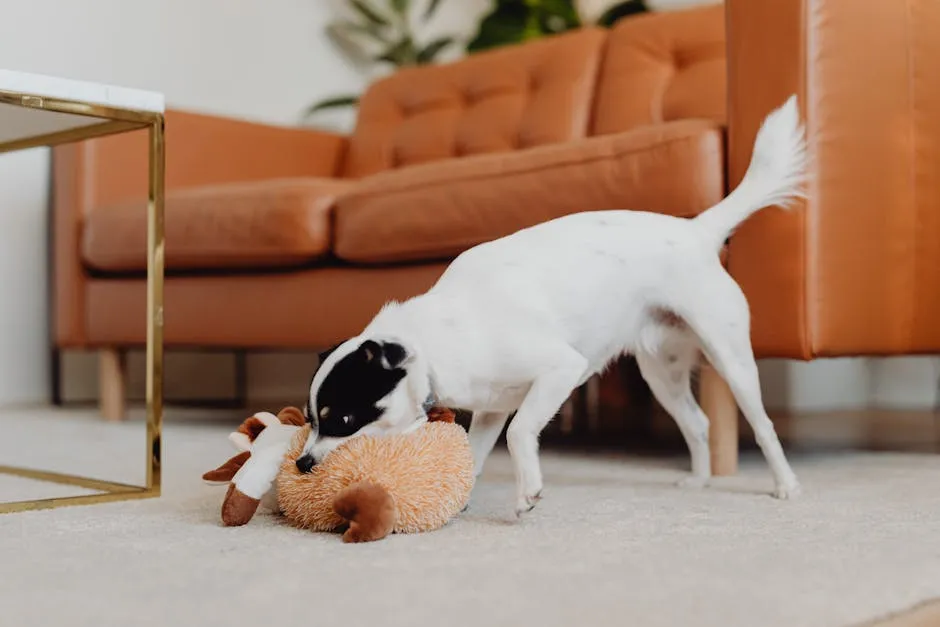
Routine is also essential. Establish a daily schedule that includes walks, playtime, and training sessions. Consistency can help reduce anxiety and confusion. It’s like giving your dog a comforting rhythm in their day!
Creating a safe environment is equally important. Remove hazards that could lead to bumps or falls, and ensure your home remains a navigable space. Keep paths clear and use night lights to help your dog move around comfortably, especially if they’re prone to nighttime wandering.
Behavioral Therapy
Behavioral therapy can provide tailored approaches for dogs struggling with CCD. Working with a veterinary behaviorist can help you develop customized strategies to improve your dog’s quality of life. They might recommend techniques to reduce anxiety, such as counter-conditioning or desensitization to specific triggers.
Incorporating calming techniques can also greatly benefit your dog. Products like ThunderShirt Classic Dog Anxiety Jacket or Adaptil Calm Home Diffuser for Dogs can help create a peaceful environment. Regular, gentle exercise can further alleviate anxiety and promote comfort.
Training sessions can also be beneficial. Simple commands and tricks can keep your dog’s mind engaged, fostering a sense of achievement. Reinforcing positive behaviors can build their confidence and strengthen your bond.
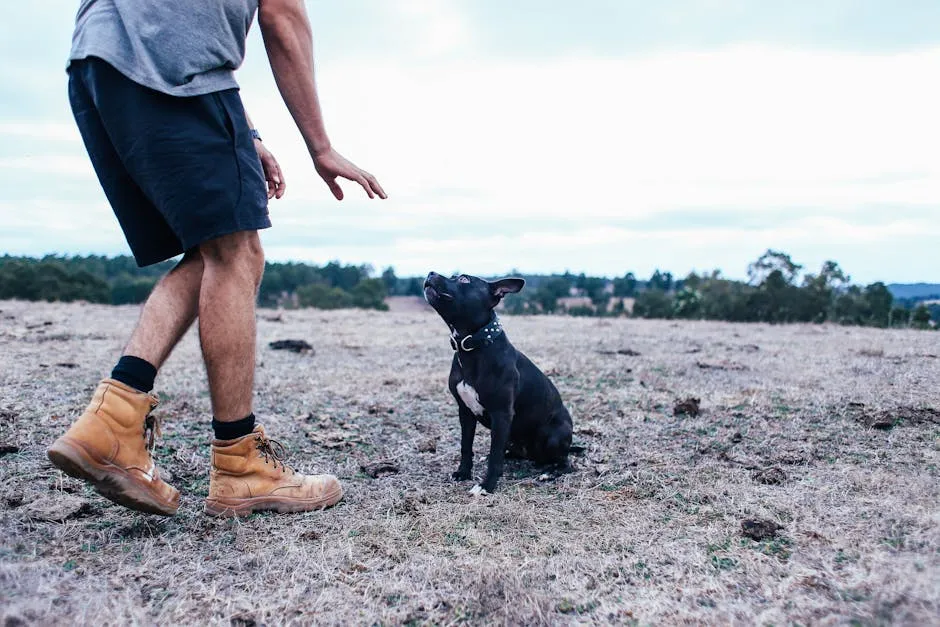
In conclusion, managing canine cognitive dysfunction involves a multi-faceted approach. Medications, dietary adjustments, environmental enrichment, and behavioral therapy all play significant roles. By addressing these areas, you can enhance your dog’s quality of life and provide them the love and support they deserve.
Home Care Tips for Dogs with CCD
Creating a Routine
Dogs love routines. Think of it as their version of a comforting cup of cocoa on a chilly day. Establishing a daily schedule for feeding, walks, and playtime can significantly improve your dog’s quality of life. Consistency helps reduce anxiety and confusion, making the world feel a little more predictable for your furry friend.
Start by setting specific times for meals. Dogs thrive on regular feeding schedules. It prevents them from getting anxious about when their next meal will come and can even help with digestion. Next, take those daily walks at the same time. A regular walking routine not only helps with physical health but also provides mental stimulation as your dog gets to sniff around their familiar territory.

Don’t forget playtime! Incorporating play into the daily routine gives your dog something to look forward to. This can be as simple as a game of fetch or tug-of-war. Keeping a routine helps your dog feel secure and understood, ultimately leading to a happier, less anxious pup.
Enhancing Comfort
Creating a comfortable environment is essential for dogs with cognitive dysfunction. Start with their sleeping area. Ensure it’s cozy and quiet, away from the hustle and bustle of the household. Use a soft bed that’s easy for them to get in and out of, especially if they’re experiencing mobility issues. Check out the PetFusion Ultimate Dog Bed for maximum comfort!
Lighting plays a crucial role, too. As dogs age, their vision may decline. Use night lights to help your dog navigate during nighttime bathroom trips. This small change can prevent confusion and accidents, making your dog feel more secure.
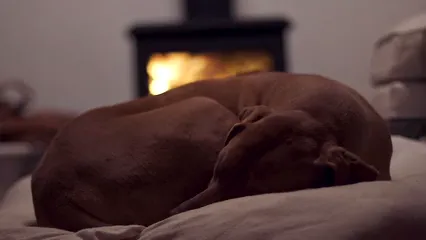
Safe navigation is key. Remove obstacles that could lead to accidents, such as clutter or slippery rugs. If your dog struggles to get around, consider using ramps or non-slip mats. These adjustments make a world of difference, allowing your dog to move comfortably and with confidence.
Engaging the Mind
A tired dog is a happy dog, and mental stimulation is just as important as physical exercise. Interactive toys and puzzles can keep your dog’s mind sharp. Look for toys that dispense treats when solved. Your dog will enjoy the challenge and reward of getting a tasty snack! Consider the PetSafe Treat Dispensing Chew Toy for added fun!
Training exercises are another fantastic way to engage your dog mentally. Teach them simple commands or tricks. This not only helps maintain cognitive function but also strengthens the bond between you and your dog. Keep the sessions short and fun; think of it as a game rather than a chore.

Additionally, incorporate scent games into your routine. Hide treats around the house and let your dog use their nose to find them. This stimulates their natural instincts and keeps their cognitive abilities active. By mixing fun with mental workouts, you’ll help keep your dog alert and engaged.
The Emotional Journey
Coping with Your Dog’s Condition
Caring for a dog with cognitive dysfunction can be emotionally taxing. Acknowledge the stress it brings; it’s perfectly normal to feel overwhelmed. You’re not alone in this journey. Many pet owners share similar experiences, and finding support can make a world of difference.
Consider joining online communities or local support groups where you can share your feelings and experiences. Hearing others’ stories can provide comfort, and you may even pick up valuable tips along the way. Remember, it’s okay to lean on others for support when times get tough.

The Decision for Euthanasia
Facing the possibility of euthanasia is one of the hardest decisions a pet owner may have to make. Regularly assess your dog’s quality of life. Ask yourself if they are still enjoying their daily activities, if they’re in pain, and if they can still find joy in simple pleasures.
Resources are available to help guide you through this heart-wrenching process. Speak with your veterinarian about your concerns. They can help assess your dog’s condition and provide insights into their quality of life. Remember, you’re making this decision out of love. It’s about ensuring your dog’s comfort and dignity in their final days.
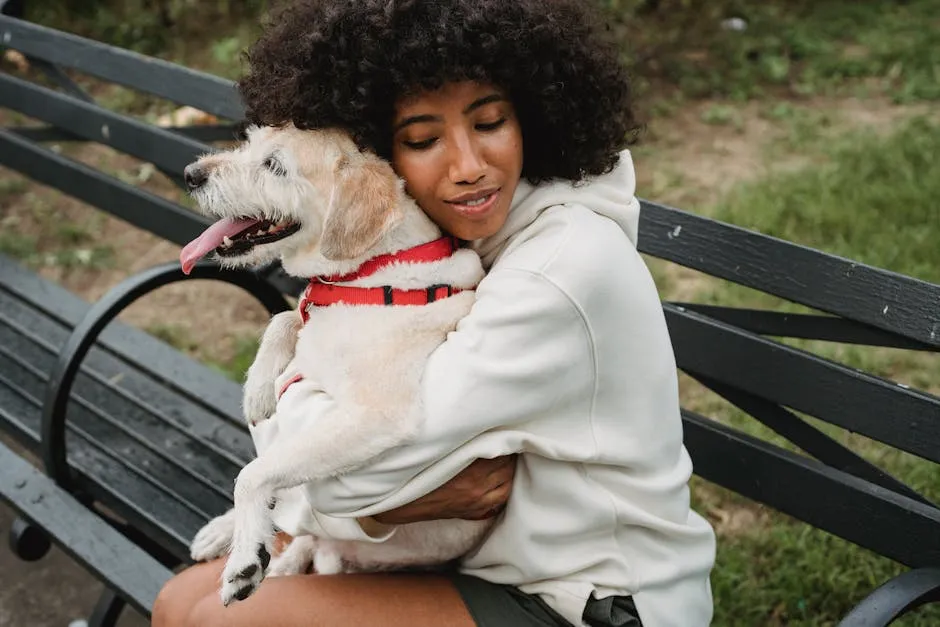
Navigating the emotional landscape of canine cognitive dysfunction takes courage. By staying informed and seeking support, you can help both you and your dog through this challenging time, ensuring your beloved companion feels cherished until the very end.
Conclusion
Caring for a dog with cognitive dysfunction can be challenging, yet rewarding. It’s like trying to decode a secret language that your furry friend speaks as they age. Each wobbly step or confused glance tells a story of their once-vibrant spirit. With the right tools and knowledge, you can significantly enhance your dog’s quality of life. Recognize the signs of cognitive dysfunction, seek veterinary guidance, and implement changes that create a loving and supportive environment.
Consider dedicating time to engage their senses with interactive toys or puzzles. Routine is key—establishing a consistent daily schedule can help minimize anxiety and confusion. Remember, your dog isn’t just a pet; they are a loyal companion who has given you years of unwavering affection. Now it’s your turn to ensure their twilight years are filled with comfort and dignity.
Think of the joy they’ve brought into your life. From wagging tails to those soulful puppy eyes, they deserve to feel secure and loved in their golden years. So, arm yourself with patience, compassion, and perhaps a few extra treats. Together, you can navigate this journey, cherishing every moment and creating lasting memories. After all, every wag of their tail and every gentle nuzzle is a reminder of the bond you share. Let’s make those moments count!
FAQs
What are the first signs of cognitive dysfunction in dogs?
The early signs of canine cognitive dysfunction (CCD) can be subtle but crucial to recognize. The DISHA(A) acronym helps identify these symptoms: Disorientation, Interactions altered, Sleep-wake changes, House soiling, Activity level changes, and Anxiety. If your pup seems lost in familiar surroundings or is suddenly less interested in social interactions, it might be time to consult a vet.
How can I help my dog with CCD at home?
Helping your dog with CCD at home involves establishing a routine. Consistent feeding and walking times create a sense of security. Engage their mind with interactive toys or games to keep them stimulated. Don’t forget to provide a comfortable sleeping area and ensure they can easily navigate your home, as this helps reduce anxiety.
Are there any supplements that can help?
Yes, several supplements can be beneficial for dogs with CCD. S-Adenosylmethionine (SAMe) is known to support liver function and improve cognitive function. Omega-3 fatty acids and antioxidants, found in diets like Hill’s Prescription Diet b/d, may also help combat cognitive decline. Always consult your vet before introducing new supplements.
When should I consider euthanasia for my dog?
Deciding on euthanasia is never easy. Consider quality of life indicators, such as your dog’s ability to enjoy daily activities, their level of pain, and overall happiness. If your dog is often distressed, unable to engage with you or their environment, or struggles with basic needs, it may be time to consult your veterinarian. They can provide guidance and help assess the situation compassionately.
Please let us know what you think about our content by leaving a comment down below!
Thank you for reading till here 🙂
All images from Pexels

